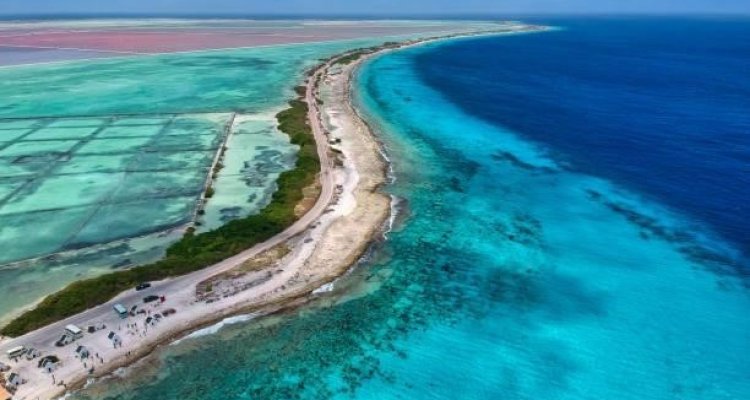
Colloquium
Estimating Chlorophyll-a concentrations using Sentinel-2 data in the coastal waters around the BES islands in the Dutch Caribbean; An exploratory research on assessing low chlorophyll-a concentrations to monitor the water quality for the protection o
By Tijmen van Rietbergen
Abstract
Coral reefs are facing threats from climate change, water pollution, and overfishing and they require protection and restoration for environmental and economic reasons. Nutrient runoff, driven by tourism, population growth, and agriculture, poses a risk to coral reefs. This study focuses on assessing the water quality in the coastal waters of Bonaire, Saba, and Statia by acquiring chlorophyll-a (Chl-a) concentrations through Sentinel-2 satellite data. Chl-a is used as a proxy measure of phytoplankton biomass abundance in the water column and is often assicoated with nutrient runoff. High phytoplankton biomass can harm the coral reef’s ecosystem. In-situ data was collected in order to validate the Chl-a concentration estimations made by the Sentinel-2 data. A baseline image was found which had the most clear circumstances for effective measuring of the water-leaving reflectances (ρw). This image was taken the on 27th of January 2023. The Sentinel-2 image preprocessing involved resampling, subsetting and atmospheric correction through the Sen2Cor processor. Indices were calculated from the acquired ρw and a new index was formulated based on the principles of the index which showed the highest R2. This index is called the Sentinel-2 Caribbean Index (Sen2CI) and achieved an R2 of 0.73. Using the Sentinel-2 Chlorophyll-a Caribbean Formula (Sen2CCF) which is derived from the Sen2CI, Chl-a concentration estimations were performed on the baseline image. Spatial variations in Chl-a concentrations were revealed, notably in front of Kralendijk and Cargill saltworks. Evaluation of four additional Sentinel-2 images demonstrated varying index performance with the Sen2CI not reaching the performance it had on the baseline image. The method’s extension to Saba and Statia also shows limited success in Chl-a concentration estimation. Challenges include the relatively low Chl-a concentrations, weather conditions and temporal fluctuations in Chl-a concentrations. Also issues like bottom reflection, and cloud cover are likely to have a great effect on the eventual Chl-a concentrations estimated by the Sen2CCF. This research highlights the complexity of Chl-a estimation in the BES islands due to the difficulty of estimating low Chl-a concentrations and presents insights into this topic like investigating other satellite systems, comparing spectral signatures, and trying out other atmospheric correction processors. Despite limitations, Sentinel-2 data proves promising for water quality assessment and spatial variation identification. In future research also temporal variations can be explored. This exploratory research sets the stage for further exploration of Chl-a concentration estimation in the BES islands using remote sensing data.
Keywords: Chlorophyll-a; Chl-a; Phytoplankton; Remote Sensing; Sentinel-2; Coral reef